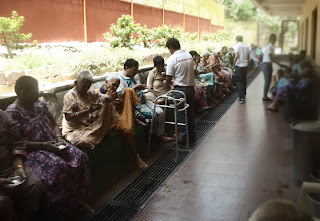Equality in all forms
All societies seem to possess some differences based on long-term prejudices & stereotypes. These deepen with time if proactively corrective actions are not taken. These are flexible and keep on changing like the shape of sand when squeezed in hand. Does it mean that inequality & discrimination is the dark side of society? If at some point a group that is cut out & then left to rot, isn’t it the responsibility of the society to understand the larger goals and bring out reforms as quickly as possible? Reforms are the mild versions of the revolution. It often takes a revolution to reach to the reforms. It’s like trekking a mountain to reach to the peak but a forward society is identified in how it shortens that path, how will it is in accepting the equality, how tolerant it is in accepting the change, in losing the status quo for the larger benefit of humanity.
We know that in most countries the bottom 20 percent of the population hold less than 5% of the national resources, on the other hand, the top 10-20 percent holds almost 50-70%. This is the face of today. In any natural or self-made calamity, it is the poor people who are most affected. They are walking on their toe all the time. Although the majority of the democratic constitutions pledge to treat everyone equally the ground reality is hard to digest.
Let’s talk of India. Our most poor population does not hold up any property. They are either landless farmers or are working as labor in any unorganized sector. A large chunk is severely depressed and depends on begging for their sustenance. Up one notch is the marginal landholders who struggle day and night with their meager resources & depends hugely on the government’s socialist policies. They are underemployed & even work in multiple places for a meager amount. These many people can be said to form almost 40-50% of the population & it is breathtaking. The higher on the line is the middle-class people. They can be seen to be divided into lower, middle & upper middle classes. Lower middle class & the middle-middle class are the backbones of the economy. They are doing repetitive works, maintenance works, research & innovation. The middle-middle class sometimes also involved in decision making based on the place they are working in. Today the Upper middle classes are involved in big decisions either in the government as bureaucrats, or at the private companies at higher managerial posts. Their views matter a lot. They are the one in whom the capitalist class leans who are the owner of resources.
In India, organized sector forms only 8% of the population. Organized sector is attractive because it offers lifetime security & fixed-monthly salary. Is it the case that the increase in this number will bring parity in the country? There is still no case for a classless society. In the industrial economy, it is near difficult to have one since it depends on the surplus it generates to invest in innovation & productivity which sustain the economy in the long run.
Civil societies, NGO & social activists play a crucial role in uncovering the plight of poor people. History does not suggest an egalitarian society for a long time but that does not mean that we stop vying for it. Discussions on ideas and conscious implementation of those in pilot basis can help us in moving in that direction. Equality must prevail for equality.


Comments
Post a Comment